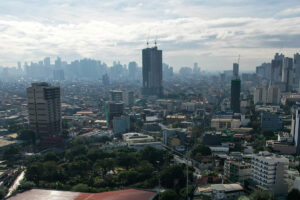By Aubrey Rose A. Inosante, Reporter
S&P GLOBAL RATINGS expects the Philippines to be the second fastest-growing economy until 2027, as it raised its growth projections.
In its Economic Outlook for Asia-Pacific, S&P Global Ratings said Philippine gross domestic product (GDP) will likely expand by 5.9% this year from 5.7% previously.
For 2026, it expects Philippine GDP to grow by 6% from 5.9% previously.
S&P Global Ratings now projects Philippine GDP growth at 6.6% in 2027 from 6.4% previously.
Based on S&P’s latest projections, the Philippines and Vietnam will post the second-fastest expansion in Asia-Pacific this year until 2027.
India is expected to lead the region, as its GDP is projected to grow by 6.5% this year, 6.7% in 2026 and 7% in 2027.
For 2028, S&P Global Ratings said Philippine GDP will likely expand by 6.5%, the third-fastest in the region after India (6.8%) and Vietnam (6.6%).
“(The) upward revision from our forecasts published in May was driven by the sharp reduction of bilateral tariffs between the US and China, which came after the pause in the country-specific ‘reciprocal’ tariffs by the US. These somewhat reduced the downsides around global trade and growth,” S&P Global Ratings Senior Lead Economist Vincent Conti told BusinessWorld in an e-mail.
US President Donald J. Trump announced higher reciprocal tariffs on most of the country’s trading partners, with Philippine goods facing the second-lowest rate in Southeast Asia at 17%.
However, the reciprocal tariffs have been paused for 90 days until July. A baseline 10% tariff remains in place.
“We nevertheless expect global trade uncertainty to be substantially higher than before January, and that would in turn provide a key headwind for investment in the Philippines,” Mr. Conti added.
S&P Global Market Intelligence Principal Economist Harumi Taguchi said the direct impact of the US tariffs on the Philippine economy is still “relatively smaller” compared with other Asia-Pacific economies.
“The magnitude of impact, including the indirect impact, depends on these scenarios. In any case, this tariff will slow global economic growth and disrupt the supply chain,” she said on Money Talks with Cathy Yang on One News.
Meanwhile, S&P Global Ratings sees the Philippines’ benchmark rate ending at 5% this year, which implies another 25-basis-point (bp) cut by the central bank this year.
“With inflation not a major risk, more focus on growth risks and external factors unlikely to significantly constrain monetary policy easing, we expect Asia-Pacific central banks to continue to cut policy rates,” it said in a report.
Last week, the Bangko Sentral ng Pilipinas (BSP) reduced the target reverse repurchase rate by 25 bps to 5.25% from 5.5% amid a moderating inflation outlook and weaker growth.
The Monetary Board’s remaining policy meetings this year are scheduled for Aug. 28, Oct. 9, and Dec. 11.
S&P Global also expects Philippine inflation to average 2.3% this year, within the 2-4% target. It also projects inflation to settle at 3.2% in 2026, 3.3% in 2027 and 3% in 2028.
The BSP forecasts inflation to average 1.6% this year, 3.4% in 2026 and 3.3% in 2027.






